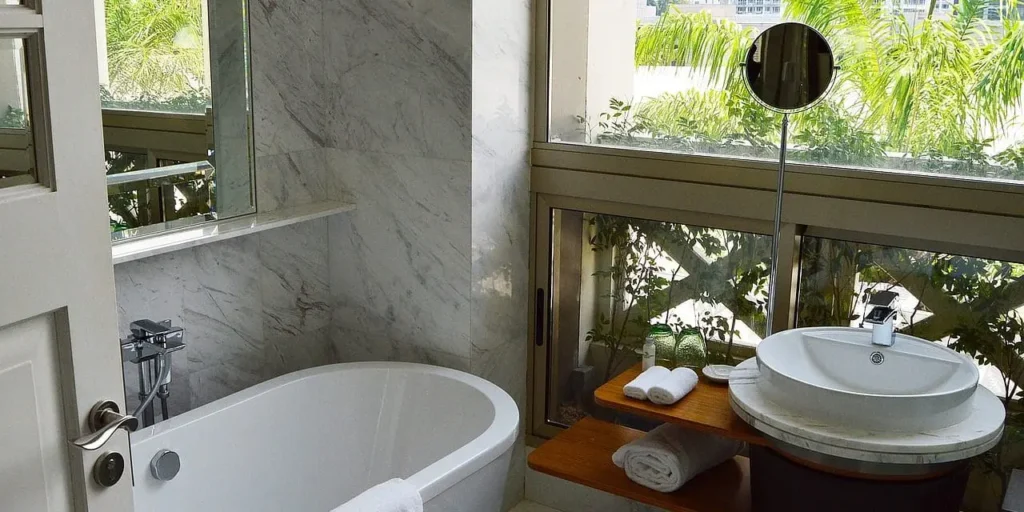
Bathroom Faucet Flow Restrictors: Efficiency and Water Conservation
In today’s world, conserving water is more important than ever. One of the simplest ways to reduce water usage in your home is by installing bathroom faucet flow restrictors. These small devices can make a significant difference in your water consumption, ultimately leading to lower utility bills and a reduced environmental impact.
Bathroom faucet flow restrictors are designed to limit the amount of water that flows through your faucet without compromising performance. By reducing the flow rate, these devices help save water while maintaining a steady and sufficient stream. In this article, we will explore the benefits of using flow restrictors, how they work, and how you can install them in your own home.

What Are Bathroom Faucet Flow Restrictors?
Flow restrictors are small devices that can be easily attached to the end of faucets. They work by limiting the water flow to a specific rate, usually measured in gallons per minute (GPM). This is particularly beneficial in areas experiencing water shortages or in homes that aim to reduce their water bills.
How Do They Work?
Bathroom faucet flow restrictors work by narrowing the opening through which water flows. This reduction in size forces the water to slow down before it exits the faucet, thus reducing the overall flow rate. Despite this limitation, the pressure remains sufficient for daily tasks like washing hands or brushing teeth.
Benefits of Using Bathroom Faucet Flow Restrictors
Water Conservation
The most obvious benefit of using bathroom faucet flow restrictors is water conservation. By reducing the flow rate, these devices can save thousands of gallons of water each year, which is not only good for the environment but also for your wallet.
Cost Savings
Lower water usage means lower utility bills. Over time, the savings from using bathroom faucet flow restrictors can add up, making them a cost-effective solution for any household.
Maintained Performance
One of the concerns homeowners have when considering flow restrictors is the potential impact on water pressure. However, modern restrictors are designed to maintain adequate pressure, ensuring that your daily routines are not interrupted.
How to Install Bathroom Faucet Flow Restrictors
Gather Your Tools
Before you start, make sure you have all the necessary tools. You’ll need a wrench, a cloth, and, of course, your flow restrictor.
Remove the Aerator
Most faucets have an aerator attached to the end of the spout. Use the wrench to gently unscrew the aerator. Be sure to wrap the cloth around the aerator to prevent any scratching.
Insert the Flow Restrictor
Once the aerator is removed, place the bathroom faucet flow restrictor inside. It should fit snugly. Reattach the aerator by screwing it back onto the faucet.
Test the Flow
Turn on the faucet to ensure the flow is reduced but still suitable for your needs. Make any necessary adjustments if the flow is too limited or too high.
Common Types of Bathroom Faucet Flow Restrictors
Fixed Flow Restrictors
These are the most common type and come with a predetermined flow rate. They are easy to install and require minimal maintenance.
Adjustable Flow Restrictors
For those who want more control over their water usage, adjustable flow restrictors allow you to change the flow rate. This flexibility can be particularly useful in households with varying water needs.
Choosing the Right Bathroom Faucet Flow Restrictor
When selecting a flow restrictor, consider factors like flow rate, durability, and compatibility with your existing faucet. Researching different brands and reading reviews can also help you make an informed decision.
Flow Rate Considerations
Most bathroom faucet flow restrictors range from 0.5 to 2.5 GPM. Choose a flow rate that balances conservation with practicality.
Potential Drawbacks
Reduced Flow for Some Tasks
While bathroom faucet flow restrictors are designed to maintain pressure, some users may find the reduced flow unsuitable for tasks that require more water, such as filling large containers.
Clogging Issues
Over time, minerals in the water can accumulate and clog the restrictor. Regular cleaning and maintenance can help prevent this issue.
Environmental Impact
By installing bathroom faucet flow restrictors, you’re taking an active step towards reducing your environmental footprint. Every gallon of water saved contributes to a more sustainable future.
Conclusion
Incorporating bathroom faucet flow restrictors into your home is a simple yet effective way to conserve water and reduce costs. With a variety of options available, you can find the perfect fit for your needs. For more tips on sustainable home improvements, consider visiting Noken’s Guide to sustainable bathroom remodeling.
For further insights on creating an eco-friendly bathroom, check out Eco Home Improvement and learn how to enhance your water-wise bathroom with our Water-Wise Remodeling guides.

FAQ
What is the primary function of a bathroom faucet flow restrictor?
The primary function is to reduce water flow to save water and lower utility bills while maintaining sufficient water pressure for daily use.
Can I install a flow restrictor myself?
Yes, installing a flow restrictor is a simple DIY task that requires minimal tools and can be completed in a few minutes.
Are flow restrictors suitable for all faucets?
Most flow restrictors are compatible with standard faucets, but it’s important to check compatibility before purchasing.
This article contains affiliate links. We may earn a commission at no extra cost to you.